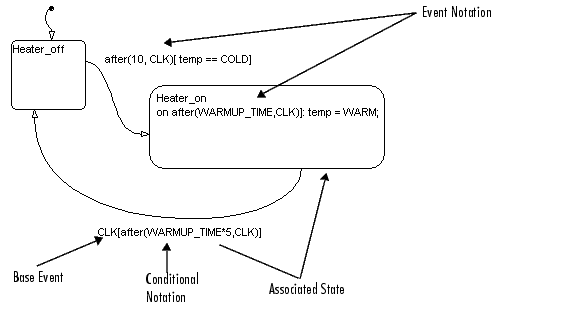| Stateflow |
  |
Rules for Using Temporal Logic Operators
The following diagram illustrates the use of temporal logic operators in action language:
 .
.
The following rules apply generally to the use of temporal logic operators:
- The recurring event on which a temporal operator operates is called the base event. Any Stateflow event can serve as a base event for a temporal operator.
Note
Temporal logic operators can also operate on recurrences of implicit events, such as state entry or exit events or data change events. See Keyword Identifiers.
|
- For a chart with no Simulink input events, you can use the
wakeup (or tick) event to denote the implicit event of a chart waking up.
- Temporal logic operators can appear only in conditions on transitions originating from states and in state actions.
| Note
This means you cannot use temporal logic operators as conditions on default transitions or flow graph transitions.
|
- The state on which the temporally conditioned transition originates or in whose
during action the condition appears is called the temporal operator's associated state.
- You must use event notation (see Temporal Logic Events) to express temporal logic conditions on events in state
during actions.
 | Using Temporal Logic | | after Temporal Logic Operator |  |





